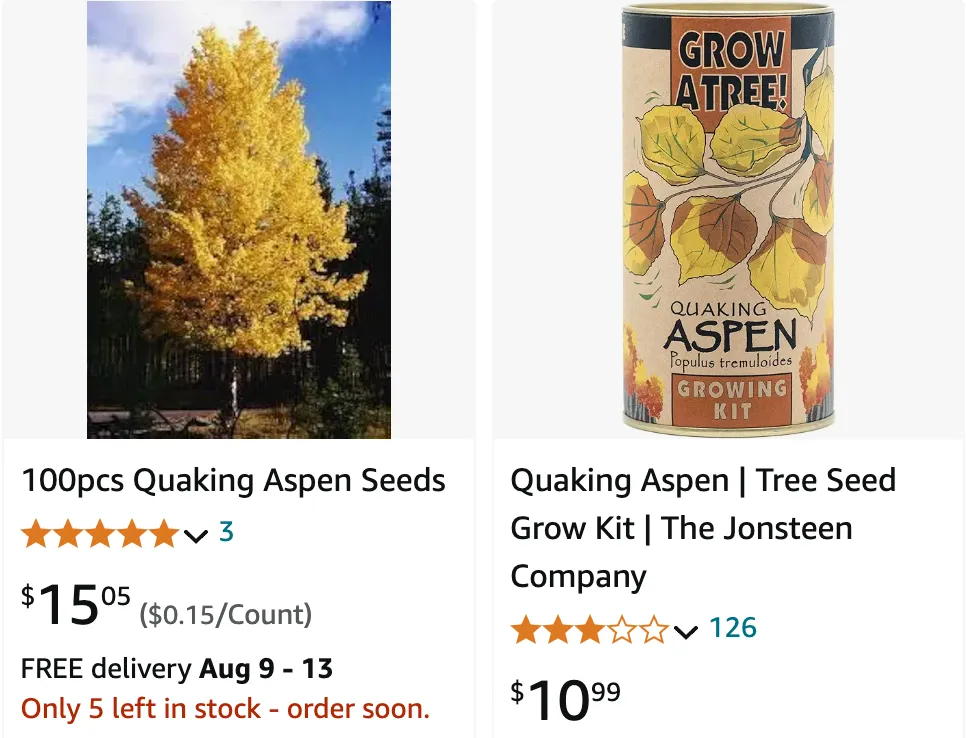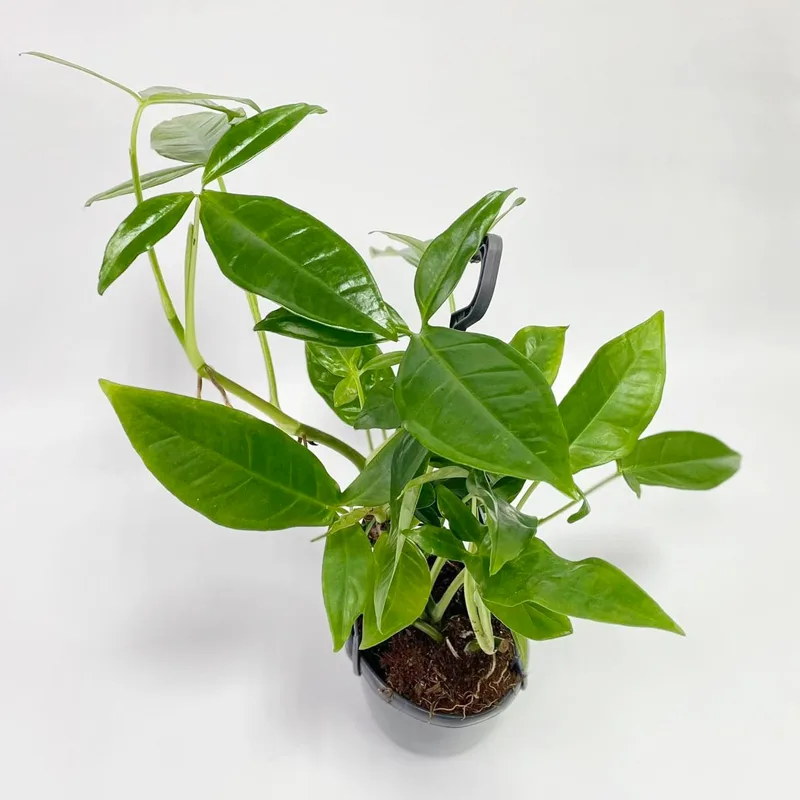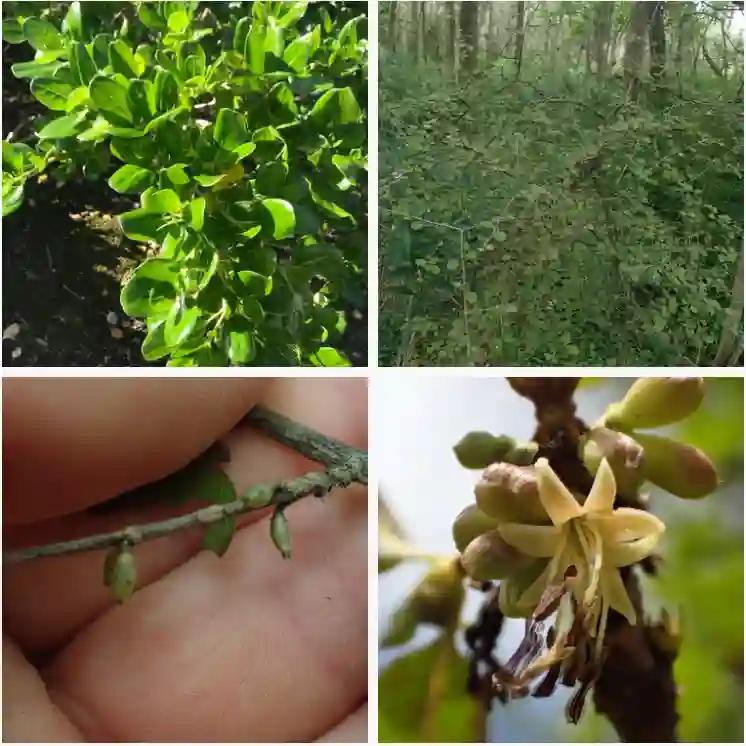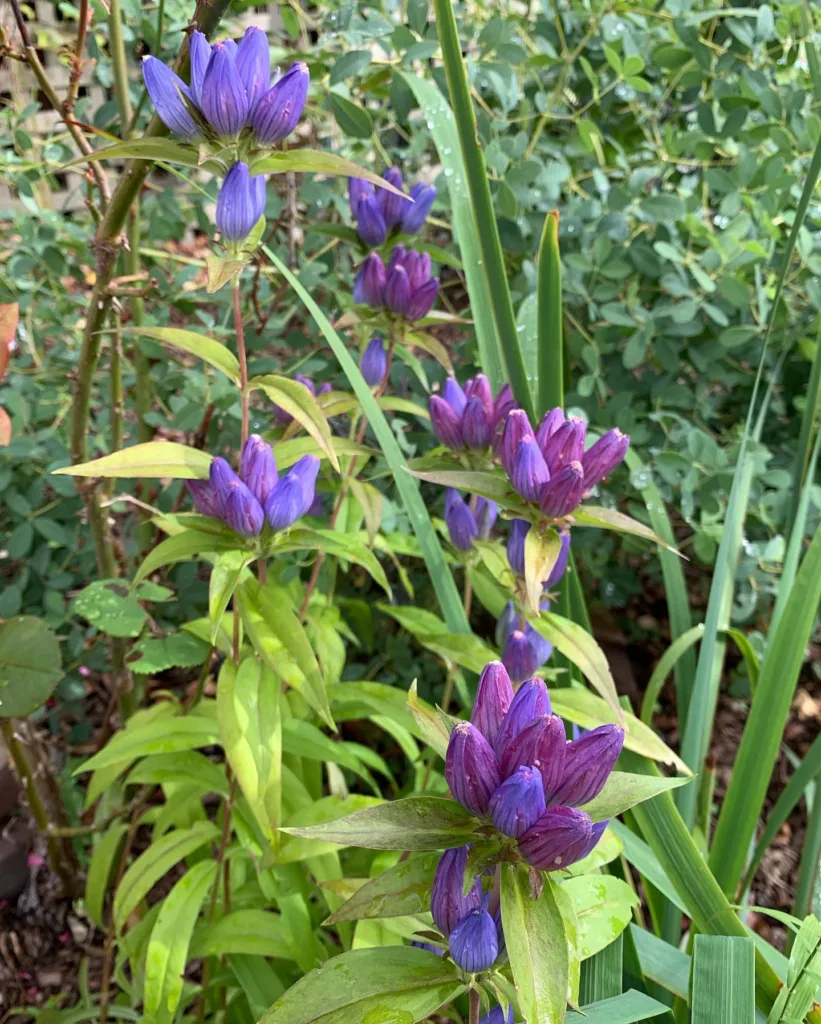
What is a Quaking Aspen?
Quaking Aspen (Populus Tremuloides) is a deciduous tree known for its beautiful, fluttering leaves that create a distinctive rustling sound in the wind. It is native to North America and is commonly found in forests, mountains, and other natural landscapes. The tree gets its name from the way its leaves tremble or “quake” in the breeze, due to their flattened petioles.
83 Species in Genus Populus
How Fast Do Quaking Aspen Grow?
Quaking Aspen trees are relatively fast-growing. Under ideal conditions, they can grow up to 24 inches per year. This rapid growth rate makes them an excellent choice for quickly establishing a grove or providing shade in a landscape. However, their growth rate can be influenced by soil quality, water availability, and climate.
How to Plant Quaking Aspen?
Planting Quaking Aspen involves selecting a location with full sun and well-drained soil. Here’s a step-by-step guide:
- Choose the Right Spot: Aspens thrive in areas that receive plenty of sunlight.
- Prepare the Soil: Ensure the soil is well-drained and slightly acidic.
- Dig a Hole: The hole should be twice as wide as the root ball but no deeper.
- Plant the Tree: Place the tree in the hole, ensuring the root collar is at ground level.
- Backfill and Water: Fill the hole with soil and water thoroughly to settle the roots.
What is the Ideal Time to Plant Quaking Aspen?
The best time to plant Quaking Aspen is in the early spring or fall when temperatures are cooler, and the tree is not actively growing. This allows the roots to establish before the heat of summer or the cold of winter.
When Do Quaking Aspens Bloom?
Quaking Aspens typically bloom in early spring, usually around April or May. They produce catkins, which are long, drooping clusters of flowers. The flowers are not particularly showy, but they play a crucial role in the tree’s reproductive cycle.
Are Quaking Aspen Good Trees?
Yes, Quaking Aspens are good trees for many reasons. They are aesthetically pleasing with their white bark and trembling leaves, provide habitat for wildlife, and can help stabilize soil. They are also useful for quick shade and windbreaks due to their fast growth rate.
Are Quaking Aspen Invasive?
Quaking Aspens can be considered invasive in some settings because they reproduce through root suckers, leading to the formation of large colonies. This clonal growth can spread aggressively if not managed properly.
Do Deer Eat Quaking Aspen?
Yes, deer are known to browse on Quaking Aspen, particularly young shoots and saplings. This can sometimes hinder the growth of new trees, especially in areas with high deer populations.
How Big Do Quaking Aspens Get?
Quaking Aspens can reach heights of 40 to 80 feet, with a spread of 20 to 30 feet. Their size can vary based on growing conditions and climate.
How Close to Plant Quaking Aspen Trees?
When planting Quaking Aspen trees, it is recommended to space them about 10 to 20 feet apart. This spacing allows for proper growth and air circulation, reducing the risk of disease.
How to Propagate Quaking Aspen Trees?
Quaking Aspens are typically propagated through root suckers rather than seeds. To propagate:
- Identify Root Suckers: Look for young shoots emerging from the root system.
- Dig and Separate: Carefully dig up the sucker, ensuring it has some roots attached.
- Replant: Plant the sucker in a prepared site, water it well, and ensure it receives adequate sunlight.
Is Quaking Aspen a Hardwood?
Quaking Aspen is technically classified as a hardwood, but it is one of the softest hardwoods. Its wood is light, with a fine, even texture, making it easy to work with.
Is Quaking Aspen Good Firewood?
Quaking Aspen can be used as firewood, but it is not the best choice due to its low density. It burns quickly and produces less heat compared to other hardwoods. However, it can be useful for kindling or for a quick fire.
What Does a Quaking Aspen Look Like?
A Quaking Aspen has smooth, white to pale green bark with black scars and knots. The leaves are round to triangular with finely serrated edges and turn a vibrant yellow in the fall. The tree’s leaves are uniquely attached to the branches with flattened petioles, causing them to flutter in the slightest breeze.
Why Do Quaking Aspens Quake?
The “quaking” of Quaking Aspen leaves is due to their flattened petioles, which allow the leaves to flutter even in light winds. This movement reduces the risk of damage from strong winds and maximizes sunlight exposure by allowing the leaves to shift and adjust.
How Do Quaking Aspen Trees Reproduce?
Quaking Aspens reproduce both sexually, through seeds, and asexually, through root suckers. The latter method is more common and leads to the formation of large clonal groves, where all the trees are genetically identical.
Quaking Aspen vs Birch
Quaking Aspen and Birch trees can look similar due to their white bark, but they are different species. Birches have more peeling bark and more defined catkins, while Aspens have smoother bark and fluttering leaves.
Quaking Aspen vs Aspen
“Quaking Aspen” and “Aspen” often refer to the same tree, Populus tremuloides. However, “Aspen” can sometimes refer to other species in the Populus genus, so it’s important to specify Quaking Aspen for clarity.
Quaking Aspen vs Bigtooth Aspen
Quaking Aspen and Bigtooth Aspen (Populus grandidentata) are closely related but can be distinguished by their leaves. Bigtooth Aspen has larger, coarsely toothed leaves compared to the finely serrated leaves of Quaking Aspen.
Quaking Aspen vs Cottonwood
Quaking Aspen and Cottonwood (Populus deltoides) belong to the same genus but are different species. Cottonwoods are larger, with more massive trunks and broader leaves. They are also typically found in wetter areas compared to the more upland-loving Quaking Aspen.
Quaking Aspen vs Paper Birch
Quaking Aspen and Paper Birch (Betula papyrifera) are both known for their white bark, but Paper Birch bark is more prone to peeling. Paper Birch also has more defined catkins and larger, more oval leaves compared to the fluttering leaves of Quaking Aspen.
Quaking Aspen vs Poplar
Quaking Aspen is a type of poplar, specifically Populus tremuloides. The term “poplar” can refer to several species within the Populus genus, so Quaking Aspen is just one specific type.
Quaking Aspen vs Trembling Aspen
Quaking Aspen and Trembling Aspen are the same species, Populus tremuloides. “Trembling Aspen” is another common name for this tree, highlighting its characteristic leaf movement.
Quaking Aspen trees are fascinating and versatile, making them a popular choice for landscapes and natural settings. Their rapid growth, unique appearance, and ecological benefits make them a valuable addition to any environment.
If i die, water my plants!



